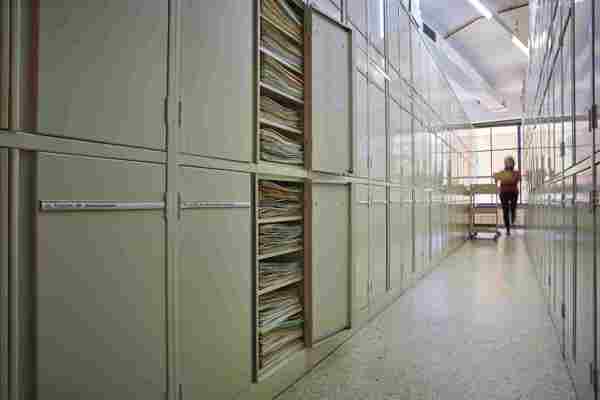
Accessing the collection
When Ferdinand Mueller founded the National Herbarium in 1853, he envisioned that it would be at ‘all times accessible to the public’. Today, Herbarium staff are digitising collecting data and photographing specimens to make this incredible collection accessible to researchers worldwide.
For general enquires or to ask about loans, appointments and detailed specimen data or images, please contact the Collections Manager: alison.vaughan@rbg.vic.gov.au.
Researchers wishing to access the Library collections should contact the Librarian: library@rbg.vic.gov.au.
Online collections
Our specimen data and images are accessible through the data portals listed below. Most of the collecting data in our collections management system is made available via the Australasian Virtual Herbarium (AVH), but some legacy data and culturally sensitive information is withheld. Where specimen images are available, they are provided under the Creative Commons BY-NC-SA 4.0 licence, which allows for reuse of the specimens for non-commercial purposes. These portals are regularly updated as we continue to digitise more of our ever-growing collection.
- The Australasian Virtual Herbarium – collecting data and images (where available) from specimens held in Australian and New Zealand herbaria
- The Atlas of Living Australia – collecting data and images (where available) from specimens held in Australian herbaria, alongside zoological specimen data and observational data from hundreds of biodiversity data providers
- The Global Biodiversity Information Facility – an international network of biodiversity data about all types of life on Earth
- Global Plants on JSTOR – specimen images and limited collecting data for type specimens (note that a subscription is required to access Global Plants content)
- VicFlora – RBGV’s comprehensive guide to the wild plants of Victoria with plant profiles, identification tools, and photos of living plants and herbarium specimens.
Request an image
Our specimen-imaging program produces high-resolution, research-quality images at 600 dpi.
We support image requests for scientific, educational and commercial purposes under a Creative Commons license (CC BY-NC-SA 4.0). Take a look at our online collections to see if we have the specimen images you need. Use the image request form below if you can’t find the specimen you are after online, or if you wish to use an image for commercial purposes.
Research requests
The herbarium is a working collection. We aim to balance the need to protect our specimens from damage with the need to use them for research. We lend specimens to other herbaria for botanical research, and to galleries and museums for short-term exhibitions. We can also provide tissue samples for molecular analysis where we have adequate plant or fungal material, subject to specimen conservation considerations. Destructive sampling and loan requests should be sent as formal letters addressed to the Collections Manager. Note that high-resolution images of specimens can often be provided in lieu of sending specimens on loan.
Visit the Herbarium
We support visits to the herbarium collection for genuine research purposes. Please contact the Collections Manager if you would like to arrange an appointment. Researchers wishing to use the Royal Botanic Gardens Victoria Library should make a separate appointment with the Librarian. Although the Herbarium is not open to the public, behind-the-scenes tours are occasionally offered. Subscribe to Royal Botanic Gardens Victoria's newsletter to keep up to date with Herbarium events.
